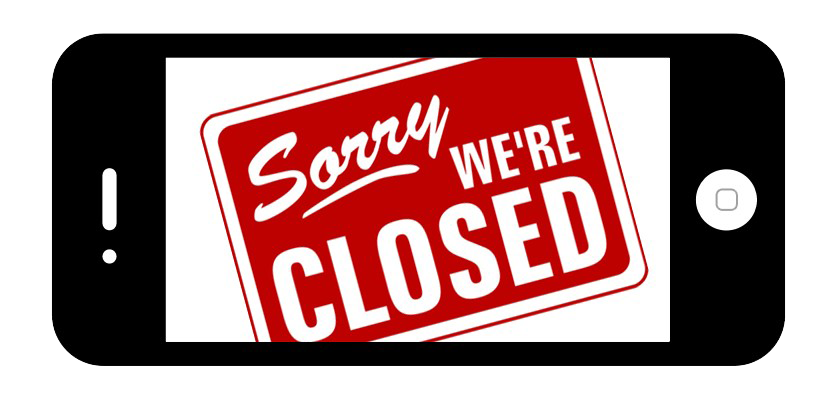
Does Your Website Have A Detour?
Something you did right brought someone to your website on their mobile device. But lo and behold once they got there you made them take a detour, an unnecessary delay in getting them to their desired destination on your site. Maybe they got discouraged and went to your competitor’s website instead.
How could a smart business person, like yourself, make customers waste their time doing that useless stretching and maneuvering to make your site readable?
Simply put, your website is not mobile friendly.
Time spent on non-mobile sites is time stolen from your customers they can never get back. Not a good first impression.
Google knows this, that’s why they’re designating sites in their search engine as “Mobile-friendly,” so you won’t waste your time going to sites that aren't.
The solution is quick and surprisingly inexpensive. The content on your site doesn't have to change, it’s just reconfigured to fit perfectly on a mobile device, easy to read and easy to navigate.
Stop making your customers take a detour on your website - Get mobilized now!
By: Artie Weitz December 18, 2014

Mobile Friendly - What does that mean?
If you have a business you probably have a website. Well is it mobile friendly? I know what you are thinking, “What does that even mean – to be mobile friendly?” So in a nutshell to be mobile friendly means your website conforms and functions properly on smartphones and other mobile devices. Still not sure if your business is mobile friendly? Well, let’s test it and find out. Grab your smartphone and bring up a browser, and type in your website address.
So did your site pass the mobile friendly test? If you had to scroll and resize the text to read the content then most likely your site is not mobile friendly. If you found out your site is mobile friendly – congratulations, your customers are having a great user experience when they visit your site on a mobile device! But, if you found out your site isn't mobile friendly because you had to scroll up and down resize the text just to read what your site had to say – keep in mind that your customers are having this same experience.
So remember this – mobile friendly websites equals a pleasant experience for your customers, a site that isn't mobile friendly… well you can figure that one out.
By: Robert Roland December 17, 2014

Is Your Business Closed to the Outside World?
It just might be - not having a mobile friendly website is like having a sign posted on your front door which reads "Sorry, we're closed." Think I'm kidding? Here are a few key facts to help convince you that going mobile is the future and the future is now!
1 Billion
- That's how many Smarthphones were shipped in 2013. And that's up more than 38% from 2012! Here's a question you need to ask yourself, "Who doesn't have a Smartphone?"
45%
- So what do users do with their Smartphones? Well, it's estimated that 45% of the time users will browse the internet with their Smartphones.
15 + Hours
- Consumers spend a lot of time researching on their mobile device. It's estimated that consumers spend 15 + hours per week researching and visiting mobile websites.
So Remember, if your site isn't mobile friendly then you might as well be telling your customers "Sorry, were closed."
By: Robert Roland December 16, 2014

Many Businesses Still Don’t Recognize the Urgency for Getting Their Websites Mobilized... Why?
When you search for a business on the internet with your smartphone and the Website is difficult to read what do you do? You tap on the screen, resize it, and zoom in on a piece of information you’re looking for, which can be time consuming and maybe even frustrating. You have clicked on a Website that is not mobile friendly!
In spite of Google giving preference to websites that are mobile friendly and tagging them accordingly, many businesses have not caught the wave to get mobile friendly. Why? Everybody has an opinion, but we believe it’s a replay of the early 90’s when businesses were questioning the value proposition of putting their business out there on the Internet. What was going to be the return on their investment (ROI) and would their business be found on the web? Some businesses recognized the importance of being on the internet as a ground floor opportunity while others waited thinking it was new and untested.
So, let’s fast forward to 2015, which is just a few weeks away. There are over 1 billion websites worldwide (internet live stats) and a large proportion of these websites are not mobile friendly today. Global smartphone use will reach 2 billion by 2015 (Bloomberg) and mobile searches are increasing at a rate 3.5% every month (Televox). How about the fact that local mobile searches (85.9 billion) are projected to exceed desktop searches (84 billion) in 2015 (eMarketer).
The point here is its critical for businesses to get their Websites mobile friendly because it’s not yet recognized that they are losing business. Here is how business is lost: 62% of smartphone users will leave a site that is not mobile friendly (Tourbillon) and likely go to a competitor. For every 100 millisecond increase in load time decreases sales by 1% (Mars Marketing Strategy). Those businesses that service consumers are the most vulnerable. The good news is businesses that have become mobile friendly, 84% see an increase in their business (Tourbillon).
The cost to get a Website mobile friendly is a few hundred dollars versus a few thousand dollars, which was typically the investment required in the past to build a website from scratch. Businesses that have had an Internet presence for many years know what we mean. Today, a business can expect a quick return on their investment after becoming mobile friendly. Businesses with older websites might also opt for going to a responsive design which is not a costly investment.
Large corporations with household names were the first to get mobile friendly and now it’s beginning to spread rapidly worldwide.
This is the time for businesses to recognize the importance of getting their Websites mobile friendly and enjoy the benefits rather than lose market share over an investment of few hundred dollars.
By: Stephen Casey December 9, 2014
